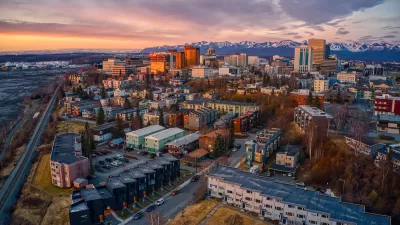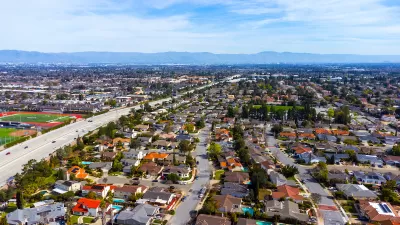An explainer of the monetary, environmental, and social costs of exuberant road building.

Reporting for KERA, Nathan Bernier outlines how the Texas Department of Transportation (TxDOT), which spends more on highways than any other state, funds its road projects. In the last ten years alone, Texas added 700 miles of new highways.
As Bernier explains, “The money for highways comes from a mix of gas taxes, vehicle registration fees, state sales taxes, levies on oil and gas companies and federal funds — which includes a big chunk of money from personal income taxes.” Historically, highways have been funded via a consumer gas tax that goes into the federal Highway Trust Fund. Now, federal dollars make up a smaller percentage of state’s road funding, and the Highway Trust Fund routinely runs out of money. “The federal gas tax — now 18.4 cents a gallon — hasn’t risen since President Bill Clinton's first year in office. The Texas gas tax is even older, frozen at 20 cents a gallon since 1991.”
Texas voters supported additional highway funding through several measures, letting the state dip into its Rainy Day Fund and allocating part of the state sales tax to road projects.
However, it’s not just about construction costs. “The true cost also includes external factors like traffic congestion, displacement, environmental impacts, and land use changes, all of which affect local communities.” Additionally, highways encourage sprawling suburbs and inefficient land use and prioritize driving over transit and other forms of transportation.
FULL STORY: Who pays for Texas highways?

Study: Maui’s Plan to Convert Vacation Rentals to Long-Term Housing Could Cause Nearly $1 Billion Economic Loss
The plan would reduce visitor accommodation by 25,% resulting in 1,900 jobs lost.

North Texas Transit Leaders Tout Benefits of TOD for Growing Region
At a summit focused on transit-oriented development, policymakers discussed how North Texas’ expanded light rail system can serve as a tool for economic growth.

Why Should We Subsidize Public Transportation?
Many public transit agencies face financial stress due to rising costs, declining fare revenue, and declining subsidies. Transit advocates must provide a strong business case for increasing public transit funding.

How to Make US Trains Faster
Changes to boarding platforms and a switch to electric trains could improve U.S. passenger rail service without the added cost of high-speed rail.

Columbia’s Revitalized ‘Loop’ Is a Hub for Local Entrepreneurs
A focus on small businesses is helping a commercial corridor in Columbia, Missouri thrive.

Invasive Insect Threatens Minnesota’s Ash Forests
The Emerald Ash Borer is a rapidly spreading invasive pest threatening Minnesota’s ash trees, and homeowners are encouraged to plant diverse replacement species, avoid moving ash firewood, and monitor for signs of infestation.
Urban Design for Planners 1: Software Tools
This six-course series explores essential urban design concepts using open source software and equips planners with the tools they need to participate fully in the urban design process.
Planning for Universal Design
Learn the tools for implementing Universal Design in planning regulations.
City of Santa Clarita
Ascent Environmental
Institute for Housing and Urban Development Studies (IHS)
City of Grandview
Harvard GSD Executive Education
Toledo-Lucas County Plan Commissions
Salt Lake City
NYU Wagner Graduate School of Public Service




























